Exploring the Unique Polarized Vision of Pit Vipers
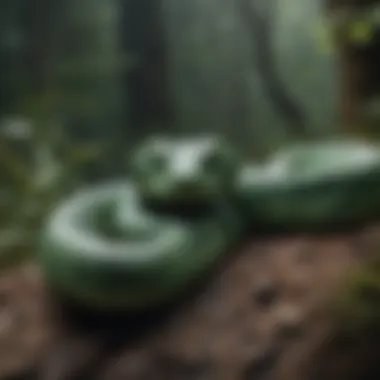

Intro
In the realm of the natural world, the ability to perceive the environment can define survival. Among reptiles, pit vipers stand out not only for their notorious bite but also for their remarkable vision. Pit vipers possess the ability to detect polarized light, a feature that enhances their predatory skills. This capability allows these serpents to effectively locate prey in diverse conditions, from sun-drenched habitats to shadowy underbrush, where ordinary vision may falter.
This article will guide you through the fascinating aspects of pit vipers' polarized vision, elucidating how their unique anatomical structures and ecological behaviors intertwine. We will delve into the implications of this visual prowess beyond herpetology, exploring potential applications in technology and sensory perception research.
Pit vipers, which include species such as the Gaboon viper and the rattlesnake, are equipped with special adaptations that enable them to interpret polarized light. This characteristic not only informs their hunting strategies but also reflects a broader evolutionary significance worth understanding.
We aim to unravel these intricacies, shedding light on how this extraordinary vision not only fits within the biological spectrum but also resonates with advancements in human technology. Understanding these creatures helps to bridge the gap between biology and behavior, revealing layers of ecological roles that are vital for sustaining life on Earth.
Now, let’s take a more in-depth look at the techniques and tips related to interpreting and appreciating the visual prowess of these intriguing reptiles.
Understanding Pit Vipers
Exploring the world of pit vipers is like opening a treasure chest filled with evolutionary jewels. These snakes are not just about their venomous bite; they are fascinating creatures equipped with astonishing adaptations that have carved their niche in the wild. Recognizing the unique traits and ecological significance of pit vipers is paramount for several reasons.
First and foremost, understanding these reptiles helps us appreciate biodiversity and the various survival strategies that have developed over millions of years. Through their exceptional characteristics, pit vipers showcase the complexities of evolutionary processes, and examining them provides insights into how species adapt to their environment for hunting and survival.
Furthermore, pit vipers’ intricate systems of vision play an enormous role in their predatory effectiveness. Their ability to detect polarized light sets them apart within the animal kingdom, making this study not only relevant to herpetologists but also to ecologists and technologists alike. The knowledge gleaned from these adaptations can be leveraged in various fields, including optics, biomimicry, and even robotics.
In delving into the behaviours, habitats, and anatomical features, this article lays the groundwork for a more rounded understanding of pit vipers. By bringing together these elements, the reader can appreciate how this species knows its way around the intricate dance of life in its ecosystem. As we move through this narrative, let’s not forget that every little detail has significance, and uncovering those layers reveals the beauty of nature’s craftsmanship.
Overview of Pit Vipers
Pit vipers, a subgroup of the family Viperidae, are widely recognized for their unique facial pits, which play a crucial role in their sensory perception. These pits are specialized organs that enable the snakes to detect infrared radiation, allowing them to locate warm-blooded prey in the dark of night. While many might only associate the term "pit viper" with danger, these snakes hold a rich tapestry of ecological relevance that deserves exploration.
They are primarily found in the Americas and parts of Asia, inhabiting various ecosystems ranging from tropical rainforests to arid deserts. Exclusive to this family are species such as the Eastern Diamondback Rattlesnake and the Fer-de-Lance, each exhibiting remarkable adaptations suited to their respective habitats.
The common perception of vipers as merely dangerous suggests an oversimplification. Their role within the food web is immense, as they help control rodent populations while providing sustenance to apex predators, thus maintaining balance within their ecosystems.
Key Characteristics
When it comes to distinguishing features, pit vipers have a few tricks up their sleeves. Here are some notable aspects:
- Facial Pits: As previously mentioned, these structures are critical for sensing heat. The ability to detect infrared radiation allows these snakes to hunt during the night with remarkable efficiency.
- Coloration: Many pit vipers are adorned with adaptable skin patterns that provide effective camouflage against the backdrop of their habitat, a feature that is crucial for both predator avoidance and prey ambush.
- Venom: Though venom carries a stigma, it serves many purposes besides incapacitating prey. It’s also a means of defense and plays a role in digestion, allowing these snakes to feed on animals larger than themselves.
These characteristics collectively make pit vipers skilled predators, capable of thriving in diverse environments.
Habitat and Distribution
Pit vipers boast a wide geographical spread, primarily found across the Americas and extending into parts of Asia. Their habitats vary significantly, enabling them to adapt and thrive in numerous ecosystems.
- Forested Areas: These snakes often take refuge in dense underbrush or trees, where their vibrant colors help them blend into the surroundings, making detection difficult for prey and predators alike.
- Deserts: Some species are adapted to arid climates and can be found in desert habitats, utilizing sandy terrain for ambush strategies.
- Swamps and Wetlands: Others prefer moisture-rich environments where they can easily hunt small mammals and birds.
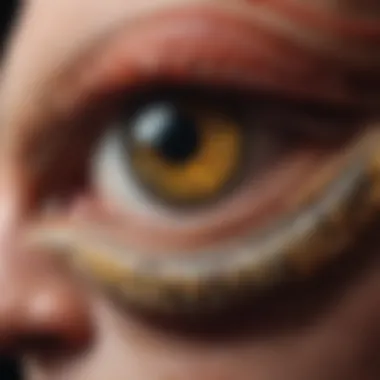
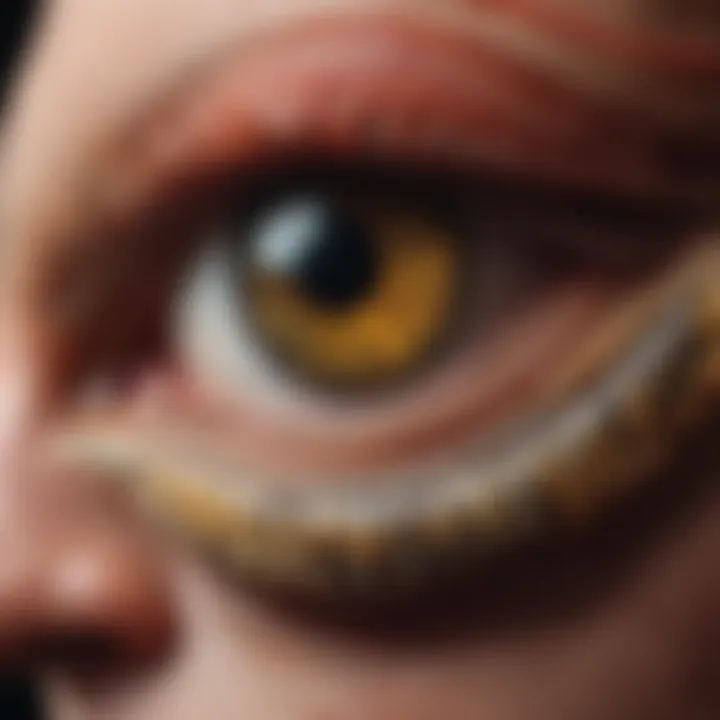
Such versatility displays their evolutionary success; whether it’s the humid swamps of Florida or the dry hills of California, pit vipers are well-equipped to adapt and dominate.
"The intricate essence of a pit viper is not just in its ferocity but also in its elegance in navigating through its environment."
In sum, this section sets the stage for a thorough examination of not only the adaptations that enable pit vipers to survive and thrive but also the unique role their specialized visual capabilities play in their predatory lifestyle.
The Adaptive Advantage of Polarization
When it comes to survival tactics in the wild, pit vipers are nothing short of masters, especially through their adaptation of polarized vision. This unique capability allows them to navigate their environments, locate prey, and outsmart potential threats with a level of efficiency that is remarkable. Getting into the nitty-gritty of this phenomenon is like peeling back the layers of an onion—each layer revealing crucial details that contribute to the overall effectiveness of this predatory strategy.
What is Polarized Light?
To grasp the significance of polarized vision, it's essential first to understand what polarized light actually is. In simple terms, light waves can oscillate in various directions; polarized light, however, vibrates primarily in a specific direction. Imagine standing under a tree's shade on a sunny day. Glancing at the ground, you might notice bright patches of light shining through the leaves. That glimmer is a mix of unpolarized and polarized light, but the latter offers a distinct advantage. Predators like pit vipers capitalize on this light by detecting it selectively in their visual field, significantly enhancing their ability to spot prey hidden among complex backgrounds.
Polarization in the Animal Kingdom
Polarized vision isn't an exclusive gift to pit vipers; rather, it's a fascinating feature shared by several species across the animal kingdom. Various creatures, ranging from insects to certain birds, make use of polarized light to improve their visual acuity. For example:
- Oysters and some fish: They can see polarized light underwater, allowing them to perceive contrasts that would otherwise go unnoticed.
- Certain species of squid: They detect polarized light for both hunting and communication purposes.
The advantages are similar to those seen in pit vipers—increased detection of prey, enhanced navigation capabilities, and improved predator evasion. As organisms have evolved, they’ve tailored their visual systems to tap into the benefits of polarization, exemplifying the distinct ecological niches they occupy.
How Pit Vipers Utilize Polarized Vision
Pit vipers are particularly proficient at wielding polarized vision as a tool for hunting. When it comes to striking their prey, precision is paramount. These snakes possess specialized adaptations in their eyes that let them discern subtle contrasts in the environment. Here’s how it plays out:
- Detection of movement: Polarized light makes it easier for pit vipers to detect subtle movements of their prey, such as a rustle in the leaves or a flick of a tail.
- Enhanced depth perception: By being able to read the polarized light spectrum, these snakes can judge distances more accurately, an upper hand when they launch their strike.
- Reduced visual clutter: In dense habitats, like a forest floor, polarization helps the snakes filter out extraneous information, allowing them to focus solely on their target.
Pit vipers have evolved to integrate this polarized light detection into their neurological framework, crafting an efficient system that maximizes their survival and hunting strategies. In essence, by harnessing the power of polarized light, these reptiles navigate a complex visual landscape, reinforcing their status as apex predators.
"Understanding the mechanics behind polarized vision allows us to appreciate the intricate ties between anatomy and behavior in pit vipers."
Anatomy of Vision in Pit Vipers
Understanding the anatomy of vision in pit vipers offers great insights into how these creatures master their environment. With a unique eye structure and exceptional visual capabilities, their ability to perceive polarized light is closely linked to their survival tactics. It’s not just about seeing; it’s about interpreting and reacting to the visual stimuli in a split second. This section dives deep into the intricate eye structure and the neurological underpinnings that make their vision so specialized.
Eye Structure and Function
Retinal Composition
The retinal composition of pit vipers is fundamental in enabling their distinct vision. Unlike many other reptiles, these snakes possess a high density of rod cells, which are essential for low-light conditions. This is especially advantageous for hunters that rely on ambushing prey during dawn or dusk. The unique arrangement of these cells allows for maximum sensitivity to different wavelengths of light.
One key characteristic of this retinal setup is the presence of specialized photoreceptors that can detect polarized light. These receptors respond to the angle of light rather than merely its brightness, giving pit vipers an edge in spotting warm-blooded prey like rodents even in dim, cluttered habitats.
A notable feature is the double-layered retina, which not only enhances sensitivity but also allows for a greater depth of field. This is a crucial advantage for a predator, as it helps in gauging distances accurately when launching an attack. However, having a retina designed mainly for detecting motion might limit their color discrimination, but for pit vipers, it seems like a trade-off worth making for survival.
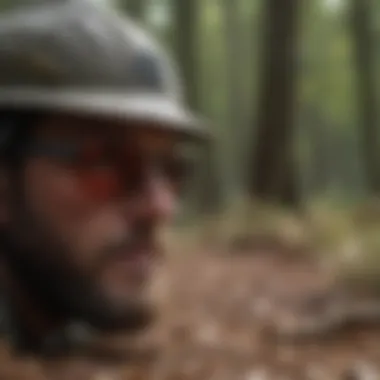
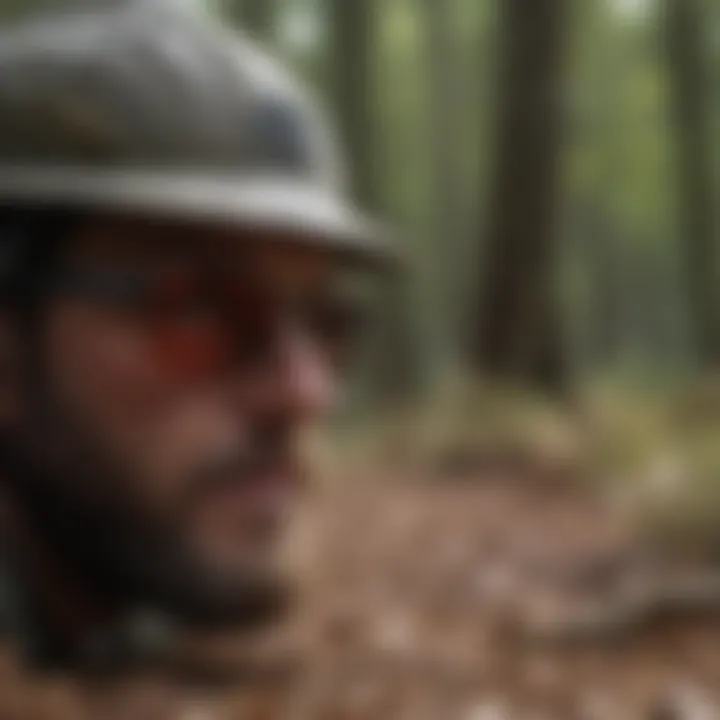
Lens Adaptations
Lens adaptations in pit vipers are another aspect that contributes significantly to their vision. The lenses are relatively flat, which helps increase the field of view. This particular structure allows them to observe their surroundings with minimal head movement. Given that pit vipers often remain motionless while waiting for prey, having a broad perspective is incredibly beneficial.
Additionally, the lenses have specific refractive properties that optimize the perception of polarized light, essentially acting as filters that enhance contrast against varied backgrounds. This characteristic plays an essential role in their hunting strategies. For instance, when a viper positions itself among leaves or underbrush, it can efficiently distinguish between moving prey and the static environment, making lethal strikes much more probable.
Though these lenses serve a primary function, they can also limit the overall sharpness of perceived images in bright sunlight. This shortcoming highlights the complex trade-offs inherent in the evolution of such specialized vision systems.
Neurological Processing of Visual Information
Visual Cortex Development
The visual cortex in pit vipers has evolved to process their unique visual capabilities effectively. This area of the brain is richly developed, allowing for sophisticated interpretation of visual signals. The processing mechanisms are finely tuned to prioritize detecting movement and spatial relationships in their surroundings, which is vital for a predatory lifestyle.
One notable aspect of visual cortex development is its ability to adapt based on the snake's experiences over time. This plasticity means that as a viper hunts and interacts with its environment regularly, its visual processing significantly improves, honing in on the subtleties of movements that might suggest potential bites.
This adaptability underscores the evolutionary interplay between anatomical structure and functional capabilities, making the visual system extremely effective for the demands of their hunting lifestyle.
Integration with Other Senses
Pit vipers do not rely solely on vision. Their ability to integrate visual input with other senses, like thermal sensing via their forked tongues, creates a comprehensive perception of their environment. This cross-modal integration enhances their situational awareness, making them formidable predators.
One unique feature in this sensory synergy is the ability to detect thermal emissions from warm-blooded animals using specialized pit organs located between their eyes and nostrils. This allows them to 'see' heat, providing invaluable information about the location and movement of prey, especially in conditions where visibility is low.
This integration and reliance on multiple sensory inputs reveal a robust adaptability that pit vipers possess. It underscores why they are considered among the apex predators in their ecosystems.
"Vision in pit vipers is not just about sight; it’s a complex interplay of specialized anatomical features and advanced neurological processing that ensures their survival in diverse habitats."
Understanding these intricate systems gives us a clearer picture of the unparalleled success of pit vipers as hunters, as well as the broader ecological roles they fulfill.
Ecological Significance
Understanding the ecological significance of pit vipers' polarized vision provides a lens to appreciate how these reptiles thrive in often hostile environments. The nuances of their visual capabilities impact not just their personal survival, but also fundamentally influence the dynamics of their ecosystems. This makes it a vital area of exploration in the study of not just pit vipers but broader ecological interactions.
Predatory Advantages
Pit vipers have a remarkable edge over their potential prey due to their unique ability to detect polarized light. This results in several predatory advantages:
- Enhanced Prey Detection: The polarized vision enables pit vipers to spot warm-blooded creatures even in low-light situations. Since these rodents can emit heat, which may not be easily detected in thick vegetation, the pit vipers quickly become attuned to variations in light polarization, directing them to potential meals.
- Subtle Movement Tracking: When prey moves, it may cause minimal disturbance in its surroundings. Polarized vision allows these snakes to perceive subtle shifts in their immediate environment, providing a boon in detecting even the slightest movement of their next meal while their own movements remain stealthy.
- Spatial Orientation: This capacity to discern polarized light also aids in judging distances and navigating their terrain. It can be the difference between a successful strike and a missed meal when navigating uneven grounds or thick brush.
Impact on Prey Behavior
The predatory advantages that pit vipers possess, driven by their polarized vision, influence the behaviors of their prey species. This interplay can lead to interesting dynamics:
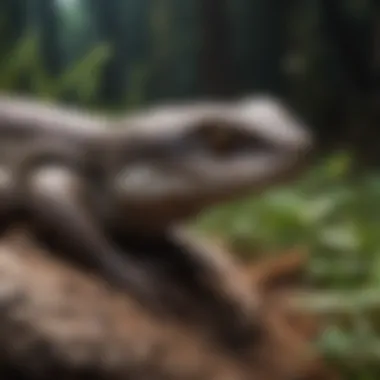
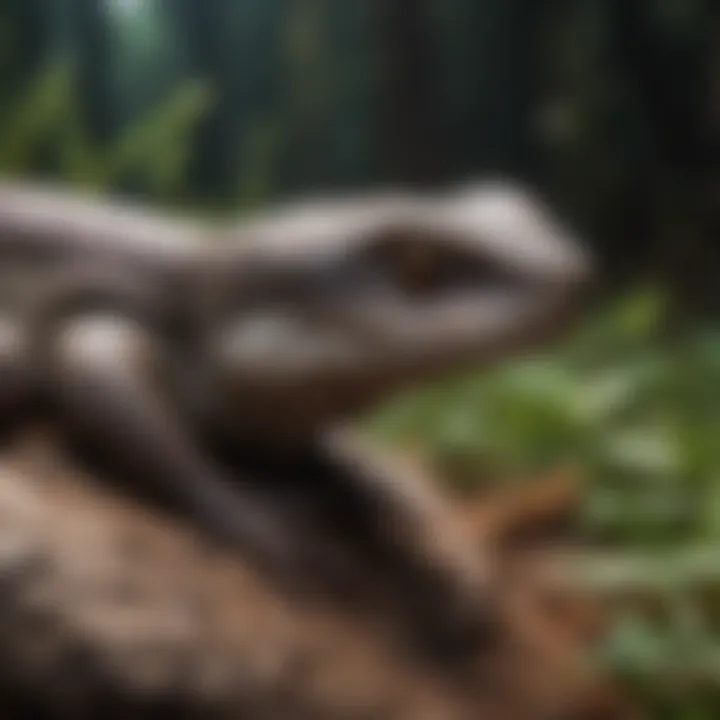
- Adaptation to Visual Cues: Prey species, having evolved alongside pit vipers, may develop enhanced visual adaptations. Some prey animals may alter their behaviors, becoming more nocturnal or developing habits that allow them to blend more effectively into their surroundings during daytime, mitigating the effectiveness of the pit vipers' vision.
- Stress and Survival Strategies: The ever-present threat from pit vipers forces prey species to adopt more cautious behaviors. This heightened vigilance can result in changes in feeding patterns, habitat use, and group dynamics, leading to a constant game of survival.
Role in Ecosystem Dynamics
Pit vipers serve as both predators and prey in their ecosystems, shaping the balance significantly. The implications of their polarized vision extend beyond individual interactions:
- Regulation of Prey Populations: By preying on certain rodent species, pit vipers help maintain ecological balance. Without these snakes, rodent populations could grow unchecked, leading to overgrazing and depletion of vegetation, which in turn would impact other wildlife.
- Ecosystem Health Indicators: As predators at higher trophic levels, pit vipers can indicate the health of their ecosystems. A declining population could signal environmental stressors, prompting further examination into ecological conditions such as habitat loss or pollution.
Implications for Science and Technology
The specialized visual abilities of pit vipers, notably their capacity to perceive polarized light, have far-reaching implications not only within ecological contexts but also in the realms of science and technology. The study of these reptiles offers profound insights into how sensory perception can inform both biological understanding and technological advancements. The unique visual acuity of pit vipers challenges conventional frameworks of optical studies, prompting researchers to rethink how organisms interact with their environments.
One of the most enduring benefits of understanding pit viper vision is the potential for innovations in imaging technologies. Lessons learned from their adaptations to polarized light could lead to more efficient methods of capturing visual data, particularly in challenging lighting conditions. Such advancements could be pivotal in fields ranging from medicine to environmental science, where clear imaging is crucial.
Additionally, the exploration of these physiological phenomena pushes forward the boundaries of biomimicry. By analyzing how pit vipers detect subtle changes in light polarization, engineers and scientists can replicate these mechanisms in artificial systems, enhancing vision technologies.
Biomimicry and Vision Technology
Biomimicry is a fascinating and growing field, where nature's blueprints inspire innovation in human technology. The ways pit vipers employ polarized vision serve as a prime example of how organisms can influence the development of artificial systems. For instance, devices mimicking the visual systems of these snakes could lead to high-performance optical sensors.
Imagine cameras that can identify objects in extreme glare or through foliage, similar to how pit vipers discern shadows cast by potential prey. Advancements in night vision could also gain insights from the bilateral processing of visual data in these reptiles. By honing in on polarization, technologies could achieve sharper contrasts and more distinct images, even in low-light conditions.
The potential applications extend into the realms of augmented and virtual reality as well. Creating immersive environments that respond to the user's orientation and movement can draw inspiration from the adaptability seen in pit viper vision.
Advancements in Optical Research
The intersection of pit viper vision and optical research presents a fertile ground for breakthrough studies. Understanding how these reptiles process polarized light expands the horizons for optical physics and perception studies. Researchers can delve deeper into the mechanics of light: how it travels, scatters, and interacts with various surfaces.
In practical terms, advancements might include more refined optical materials that leverage the principles discovered in pit viper vision. These innovations could lead to the creation of filters and lenses that enhance visibility under specific conditions. Moreover,
- Polarized sunglasses that mimic the adaptive capabilities of pit vipers could result in improved safety for outdoor enthusiasts by reducing glare effectively.
- The insights gained may also nurture interdisciplinary collaboration; biologists, physicists, and engineers could unite to harness these findings for commercial development.
"Nature has always been the best engineer. Understanding its solutions leads us to innovate more effectively and sustainably."
In summary, by studying the nuances of pit viper vision, we are not just admiring evolutionary marvels but setting a versatile stage for invention. Such endeavors not only bridge an appreciation of nature but accelerate the march of technological progress.
Culmination
In wrapping up our exploration of the unique visual capabilities of pit vipers, it becomes clear that their polarized vision is not just a fascinating quirk of nature, but a pivotal aspect of their existence. Such specialized eyesight provides them with distinct advantages in their predatory lifestyles, allowing for more accurate targeting of prey even in low light or obscured environments. This extraordinary adaptation illustrates the complex relationship between an organism and its habitat, showcasing how evolution fine-tunes sensory perception to optimize survival.
Summary of Key Points
- Unique Polarized Vision: Pit vipers have a biological mechanism that enables them to detect polarized light, enhancing their ability to spot prey that might otherwise be camouflaged. This capability, stemming from their specialized eye structure, allows them to ascertain subtle differences in their environment.
- Anatomical Adaptations: The structural features of pit viper anatomy, including lens composition and retinal adaptations, are finely tuned for this remarkable vision. This underscores the intricate ways in which physical attributes are aligned with environmental demands.
- Ecological Impacts: The polarized vision transforms not only the hunting practices of these snakes but also implicates the dynamics of the ecosystem itself. Their predation affects the population and behavioral patterns of other species, reinforcing their role as apex predators in various habitats.
- Biomimicry in Technology: Lessons learned from pit viper vision are being translated into technology and research. Optical devices inspired by these reptiles' capabilities hold promise in various fields, including surveillance and advanced imaging techniques.
Future Directions in Research
Looking ahead, the potential for future studies on pit viper vision is vast. Researchers are encouraged to delve deeper into the following areas:
- Comparative Studies: Investigating how other species with similar sensory adaptations—like some insects and other reptiles—process polarized light might yield insights into evolutionary biology and sensory ecology.
- Application in Robotics: Exploring the integration of polarized vision in robotics and artificial intelligence could revolutionize navigational systems. Understanding biological principles can help engineer smarter, more efficient machines that replicate these natural processes.
- Impact of Climate Change: Assessing how changing environmental conditions affect pit viper habitats and, consequently, their polarized vision can inform conservation efforts and strategies to protect essential ecosystems.
The journey into the visual world of pit vipers paints a picture of nature's ingenuity and the layers of complexity in how species thrive. As we continue to unveil these secrets, the implications ripple out across various disciplines, informing our understanding of biology, technology, and ecology.







